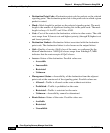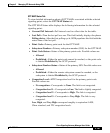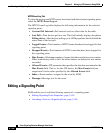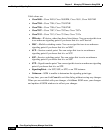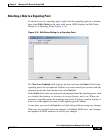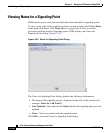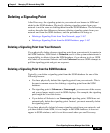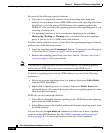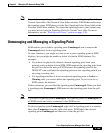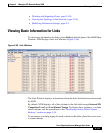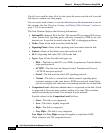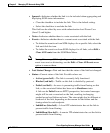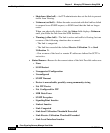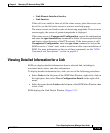
Chapter 3 Managing ITP Networks Using SGM
Working with Signaling Points
3-168
Cisco Signaling Gateway Manager User Guide
78-15589-01
Be aware of the following special situations:
• If you have not physically deleted a known signaling point from your
network, and you delete it from SGM, SGM removes the signaling point from
the poll list, and at the next poll SGM returns the signaling point to the
DEFAULT view, and labels the signaling point as a new signaling point if you
are using a custom view.
• If a signaling point has at least one adjacent signaling point in Active,
Discovering, Waiting, or Warning state, you cannot delete the signaling
point. If you try to do so, SGM cancels the deletion.
If either of these situations occurs, do not delete the signaling point again. Instead,
perform one of the following actions:
• Label the signaling point Unmanaged. See the “Unmanaging and Managing
a Signaling Point” section on page 3-169 for more details.
• Remove the signaling point from your view. See the “Working with Views”
section on page 3-26 for more details.
Note If you delete a signaling point from the SGM database, the signaling point is
deleted for all SGM clients and views connected to that SGM server.
To delete a signaling point from the SGM database, use one of the following
procedures:
• Select one or more signaling points in a window, then select Edit>Delete
from the SGM Main Menu.
• Right-click a signaling point in a window, then select Delete Item in the
right-click menu. (You cannot delete more than one signaling point at a time
from the right-click menu.)
SGM asks you to confirm the deletion:
• Select Yes to delete the selected signaling points. SGM deletes the signaling
points from the SGM database.
• Select No to return to the window without deleting any signaling points from
the SGM database.
You can also use the sgm delete sp command to delete one or more signaling
points from the SGM database. See the “SGM Commands and Descriptions”
section on page B-2 for more information on the use of this command.



